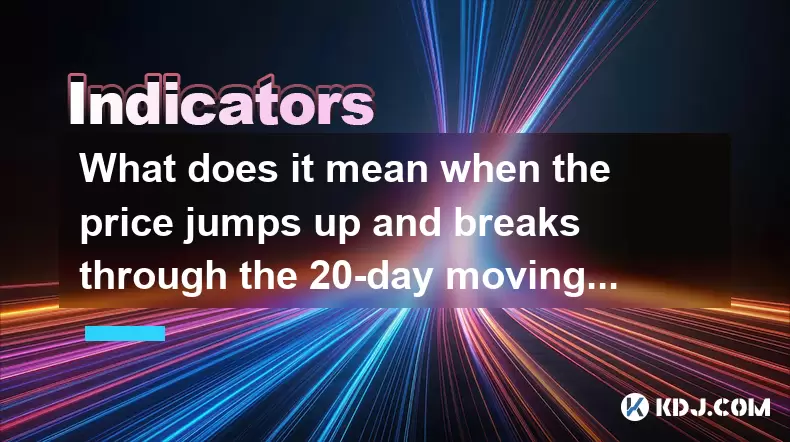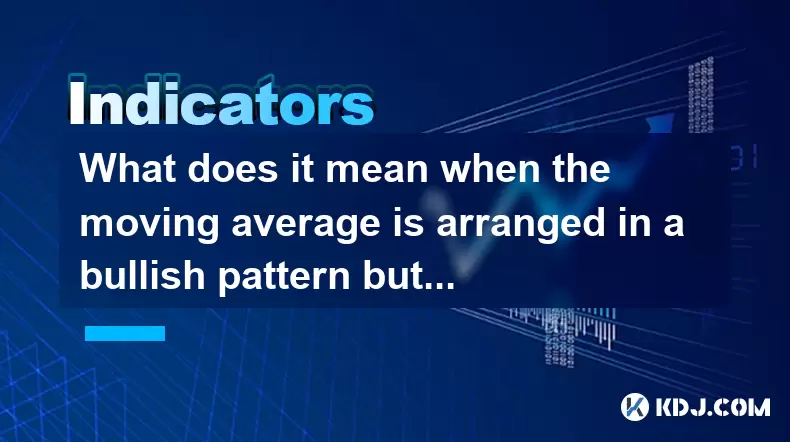-
 Bitcoin
Bitcoin $118000
0.67% -
 Ethereum
Ethereum $3750
0.71% -
 XRP
XRP $3.183
1.61% -
 Tether USDt
Tether USDt $1.000
-0.01% -
 BNB
BNB $788.1
1.21% -
 Solana
Solana $186.0
0.85% -
 USDC
USDC $0.9999
-0.02% -
 Dogecoin
Dogecoin $0.2373
1.25% -
 TRON
TRON $0.3204
1.76% -
 Cardano
Cardano $0.8266
1.85% -
 Hyperliquid
Hyperliquid $44.04
1.28% -
 Sui
Sui $4.192
5.88% -
 Stellar
Stellar $0.4399
2.63% -
 Chainlink
Chainlink $18.40
1.19% -
 Hedera
Hedera $0.2842
9.06% -
 Bitcoin Cash
Bitcoin Cash $560.5
2.46% -
 Avalanche
Avalanche $24.99
4.58% -
 Litecoin
Litecoin $114.5
1.25% -
 UNUS SED LEO
UNUS SED LEO $8.980
-0.03% -
 Shiba Inu
Shiba Inu $0.00001406
0.53% -
 Toncoin
Toncoin $3.306
4.27% -
 Ethena USDe
Ethena USDe $1.001
0.03% -
 Polkadot
Polkadot $4.169
2.37% -
 Uniswap
Uniswap $10.56
1.95% -
 Monero
Monero $322.8
1.06% -
 Dai
Dai $0.0000
0.00% -
 Bitget Token
Bitget Token $4.545
0.12% -
 Pepe
Pepe $0.00001261
1.29% -
 Aave
Aave $296.5
1.27% -
 Cronos
Cronos $0.1379
5.90%
What does it mean when the price jumps up and breaks through the 20-day moving average?
A breakout above the 20-DMA on high volume signals bullish momentum, often prompting traders to enter long positions with stop-losses below the average for risk control.
Jul 26, 2025 at 02:35 pm

Understanding the 20-Day Moving Average in Cryptocurrency Trading
The 20-day moving average (20-DMA) is a widely used technical indicator in the cryptocurrency market that calculates the average closing price of an asset over the past 20 trading days. This metric smooths out price data to create a single flowing line, helping traders identify the direction of the trend. When the current price is above the 20-DMA, it generally signals bullish momentum. Conversely, when the price is below this average, it may indicate bearish sentiment. The 20-DMA is particularly popular among short- to medium-term traders due to its responsiveness to recent price action without being overly volatile.
Traders often use the 20-DMA as a dynamic support or resistance level. In an uptrend, the moving average can act as a support zone, where prices tend to bounce upward after touching or nearing the line. In a downtrend, it may serve as resistance, where price rallies stall and reverse. The significance of the 20-DMA increases when combined with volume analysis and other indicators such as the Relative Strength Index (RSI) or MACD.
What Happens When Price Breaks Above the 20-Day Moving Average?
A price breakout above the 20-DMA suggests a potential shift in market sentiment from bearish to bullish. This breakout is considered a technical signal that buying pressure is overcoming selling pressure. When the closing price consistently trades above the 20-DMA, especially on higher-than-average volume, it strengthens the validity of the breakout. This scenario often attracts momentum traders who seek to enter long positions in anticipation of further upward movement.
It's important to distinguish between a single-day breakout and a sustained move above the 20-DMA. A one-day spike above the average may be a false signal, especially if it lacks volume confirmation. A more reliable signal occurs when the price closes above the 20-DMA for two or three consecutive days, indicating sustained buying interest. Traders watch for this pattern to avoid being misled by short-term volatility.
How to Confirm the Validity of the Breakout
To assess whether a breakout above the 20-DMA is meaningful, traders use several confirmation techniques:
- Volume analysis: A breakout accompanied by significantly higher trading volume increases the likelihood that the move is genuine. Low-volume breakouts are often treated with skepticism.
- Price action patterns: Look for bullish candlestick formations such as bullish engulfing patterns or hammer candles near the moving average, which can reinforce the breakout signal.
- Multiple time frame analysis: Check higher time frames (e.g., 4-hour or daily charts) to see if the breakout aligns with broader trend reversals or resistance breaks.
- Support from other indicators: Use tools like the MACD crossing above its signal line or RSI moving above 50 to confirm strengthening momentum.
These elements together help traders filter out noise and focus on high-probability setups.
Setting Up Alerts and Monitoring the 20-DMA on Trading Platforms
Most cryptocurrency trading platforms, including Binance, Coinbase Advanced Trade, and TradingView, allow users to plot the 20-DMA directly on price charts. To set this up:
- Open the chart of the desired cryptocurrency (e.g., BTC/USDT).
- Click on the "Indicators" or "Studies" button.
- Search for "Moving Average" and select the Simple Moving Average (SMA) option.
- Set the period to 20 and ensure the source is set to "Close."
- Adjust the color to make it easily distinguishable (e.g., blue or green).
- Optionally, enable alerts by right-clicking the moving average line and selecting "Add Alert."
- Configure the alert to trigger when the price crosses above the 20-DMA, choosing notification methods such as email, pop-up, or sound.
This setup allows traders to react quickly when a breakout occurs, especially during volatile market sessions.
Strategic Entry and Risk Management After the Breakout
Once the price breaks above the 20-DMA, traders may consider entering long positions, but proper risk management is essential. A common strategy involves:
- Entering on retest: Wait for the price to rise above the 20-DMA, pull back, and then retest the moving average as support before entering. This reduces the risk of chasing a false breakout.
- Placing a stop-loss order just below the 20-DMA or below the recent swing low to limit downside risk.
- Setting a take-profit level based on previous resistance zones or Fibonacci extensions.
- Scaling out of the position by taking partial profits at key levels while letting the remainder ride with a trailing stop.
Using a risk-reward ratio of at least 1:2 ensures that potential gains outweigh possible losses. For example, if the stop-loss is $100 away from the entry, the take-profit should be at least $200 away.
Common Misinterpretations of the 20-DMA Breakout
Not every breakout leads to a sustained trend. Some traders misinterpret short-term fluctuations as strong signals. Key pitfalls include:
- Acting on a breakout without volume confirmation, which can lead to losses during fakeouts.
- Ignoring the broader market context, such as Bitcoin’s overall trend or macroeconomic news affecting crypto sentiment.
- Failing to adjust for market volatility, especially in low-liquidity altcoins where price spikes can be manipulated.
- Overreliance on the 20-DMA alone without incorporating support/resistance levels or order book analysis.
Understanding these nuances helps traders avoid impulsive decisions and maintain discipline.
Frequently Asked Questions
Q: Can the 20-day moving average be used on time frames other than daily?
Yes, the 20-DMA can be applied to hourly, 4-hour, or even weekly charts. On a 1-hour chart, it represents the average of the last 20 hours. The interpretation remains similar—price above indicates bullish momentum, below indicates bearish—but the signal frequency increases with shorter time frames.
Q: Is the 20-day moving average more effective for certain cryptocurrencies?
The 20-DMA works across various cryptocurrencies, but it tends to be more reliable in high-liquidity assets like Bitcoin and Ethereum due to reduced price manipulation. In low-cap altcoins, whipsaws and false breakouts are more common, so additional filters are recommended.
Q: What is the difference between a simple and exponential 20-day moving average?
The Simple Moving Average (SMA) gives equal weight to all 20 days. The Exponential Moving Average (EMA) places more weight on recent prices, making it more responsive to new information. Traders often use the 20-day EMA for quicker signals, especially in fast-moving crypto markets.
Q: How often should I recalculate the 20-day moving average?
The 20-DMA recalculates automatically with each new candle. On a daily chart, it updates once per day. On a 1-hour chart, it updates every hour. Manual recalculation is unnecessary as trading platforms handle this in real time.
Disclaimer:info@kdj.com
The information provided is not trading advice. kdj.com does not assume any responsibility for any investments made based on the information provided in this article. Cryptocurrencies are highly volatile and it is highly recommended that you invest with caution after thorough research!
If you believe that the content used on this website infringes your copyright, please contact us immediately (info@kdj.com) and we will delete it promptly.
- Bitcoin Targets New All-Time Highs: Trader's Bullish $127,000 Target
- 2025-07-27 04:50:12
- Bitcoin Price Dip? Smart Investors Buy Crypto Presales Now!
- 2025-07-27 04:30:12
- REI, MDT, Big Gainers: Catching the Crypto Wave in Real Time
- 2025-07-27 04:50:12
- Altcoins on Fire: Sui, Cronos, and the Crypto Market's Next Big Thing
- 2025-07-27 04:55:17
- Riding the AI Token Wave: Is Ruvi AI the Next Big Investment During the Crypto Bull Run?
- 2025-07-27 05:00:12
- XRP, DOGE, RTX: What's Hot and What's Not in the Crypto World?
- 2025-07-27 03:30:12
Related knowledge

What does it mean that the rebound is blocked after the moving average is arranged in a short position for the first time?
Jul 26,2025 at 10:51am
Understanding the Short-Term Moving Average ConfigurationWhen traders refer to a 'short position arrangement' in moving averages, they are describing ...

What does it mean that the parabolic indicator and the price break through the previous high at the same time?
Jul 26,2025 at 07:22pm
Understanding the Parabolic Indicator (SAR)The Parabolic SAR (Stop and Reverse) is a technical analysis tool developed by J. Welles Wilder to identify...

What does it mean that the price falls below the short-term moving average after the RSI top divergence?
Jul 26,2025 at 11:01pm
Understanding RSI Top Divergence in Cryptocurrency TradingThe Relative Strength Index (RSI) is a momentum oscillator widely used in cryptocurrency tra...

What does it mean when the moving average is arranged in a bullish pattern but the MACD bar is shortened?
Jul 27,2025 at 06:07am
Understanding the Bullish Moving Average PatternWhen traders observe a bullish moving average pattern, they typically refer to a configuration where s...

What does it mean when the price rises along the 5-day moving average for five consecutive days?
Jul 26,2025 at 08:07am
Understanding the 5-Day Moving Average in Cryptocurrency TradingThe 5-day moving average (5DMA) is a widely used technical indicator in cryptocurrency...

What does it mean when ADX breaks through 25 and +DI continues to rise?
Jul 26,2025 at 07:00pm
Understanding the ADX Indicator and Its ThresholdsThe Average Directional Index (ADX) is a technical analysis tool used to measure the strength of a t...

What does it mean that the rebound is blocked after the moving average is arranged in a short position for the first time?
Jul 26,2025 at 10:51am
Understanding the Short-Term Moving Average ConfigurationWhen traders refer to a 'short position arrangement' in moving averages, they are describing ...

What does it mean that the parabolic indicator and the price break through the previous high at the same time?
Jul 26,2025 at 07:22pm
Understanding the Parabolic Indicator (SAR)The Parabolic SAR (Stop and Reverse) is a technical analysis tool developed by J. Welles Wilder to identify...

What does it mean that the price falls below the short-term moving average after the RSI top divergence?
Jul 26,2025 at 11:01pm
Understanding RSI Top Divergence in Cryptocurrency TradingThe Relative Strength Index (RSI) is a momentum oscillator widely used in cryptocurrency tra...

What does it mean when the moving average is arranged in a bullish pattern but the MACD bar is shortened?
Jul 27,2025 at 06:07am
Understanding the Bullish Moving Average PatternWhen traders observe a bullish moving average pattern, they typically refer to a configuration where s...

What does it mean when the price rises along the 5-day moving average for five consecutive days?
Jul 26,2025 at 08:07am
Understanding the 5-Day Moving Average in Cryptocurrency TradingThe 5-day moving average (5DMA) is a widely used technical indicator in cryptocurrency...

What does it mean when ADX breaks through 25 and +DI continues to rise?
Jul 26,2025 at 07:00pm
Understanding the ADX Indicator and Its ThresholdsThe Average Directional Index (ADX) is a technical analysis tool used to measure the strength of a t...
See all articles

























































































